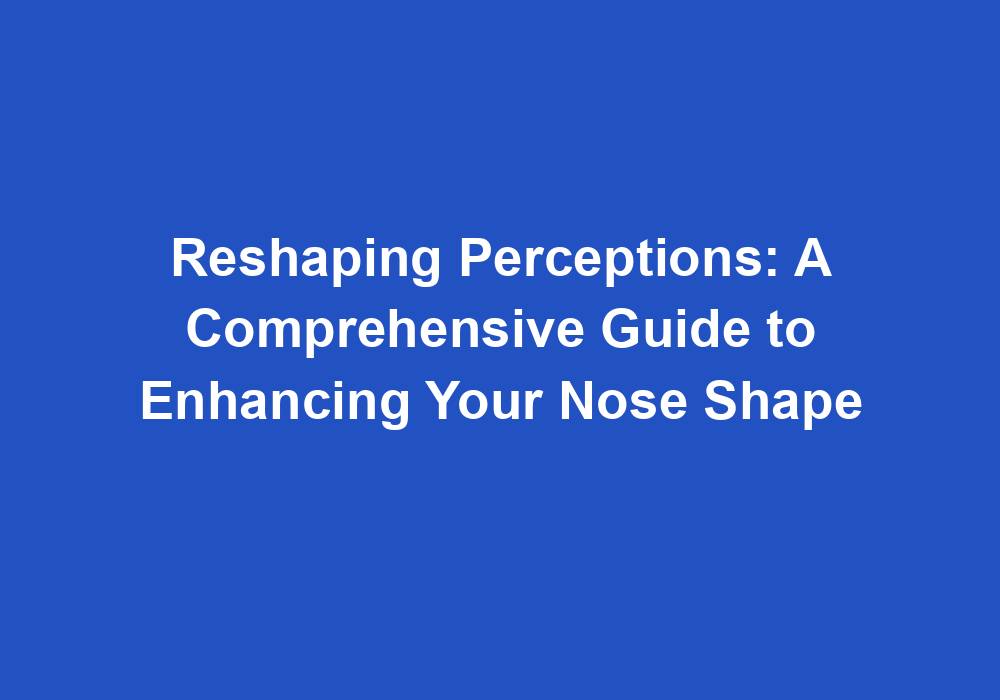Teleconsultation – 2023-07-14 20:38
How can I correct a nose? my nose is too long.
Dear Reader,
Thank you for reaching out and expressing your discomfort with the size of your nose. There are a few surgical procedures available to help modify the size and shape of your nose that you may want to consider.
A Rhinoplasty, commonly known as a nose job, is an operation that changes the shape of the nose. There are two types: closed Rhinoplasty, where cuts are made inside the nose, and open Rhinoplasty, where cuts are made across the tissue between the nostrils.
An option for you could be a Reduction Rhinoplasty, a procedure specifically designed to reduce the size of the nose. Here’s an overview of the process:
- Anesthesia: The procedure begins with the administration of anesthesia to ensure you are comfortable throughout the operation. This could be either general anesthesia or intravenous sedation.
- Incisions: The surgeon makes incisions to access the bones and cartilage that provide the structure to your nose. These incisions are usually made inside your nose, so they are invisible after the surgery.
- Resizing: If your nose is too large or wide, the surgeon may remove some bone or cartilage, or use grafts (pieces of your own cartilage or bone) to add volume.
- Reshaping: The bone and cartilage are then reshaped, and the skin and tissue are redraped over the structure of your nose.
- Sutures: Finally, the surgeon will use sutures to close the incisions.
It’s important to note that all surgical procedures come with risks, including infection, adverse reactions to anesthesia, and unsatisfactory results. It’s crucial to discuss these risks with your surgeon before undergoing any operation.
After surgery, you may be asked to wear a nasal splint for the first week. You can expect swelling and some bruising around the eyes, which will begin to improve after the third day. It can, however, last up to two weeks. Most people can return to their regular activities within a week or two.
Remember to consult with a board-certified plastic surgeon to discuss if this procedure is suitable for you. It’s also important to have realistic expectations and to understand that the goal is improvement, not perfection.
Please note that this is an AI research project and should not be taken as medical advice.
I hope this advice has been helpful.
Yours sincerely,
Prof. W. M. R
MBBS, BmedSc, MD, PhD, FRACS (Plast)
Glossary:
- Rhinoplasty: A surgical procedure to modify the shape of the nose
- Reduction Rhinoplasty: A type of Rhinoplasty specifically designed to reduce the size of the nose
- Anesthesia: A state of controlled, temporary loss of sensation or awareness that is induced for medical purposes
- Incisions: Surgical cuts made in the skin during an operation
- Sutures: Stitches used to hold skin, internal organs, blood vessels and all other tissues of the human body together after they have been severed by injury, incision or surgery
- Nasal splint: A protective cover placed over the nose to help maintain its new shape following surgery
- Grafts: Pieces of bone, skin, or other tissue that are transplanted, often surgically, from a donor site to a recipient site.
General Data Protection Regulation (GDPR)
Kindly take note that this is a research project conducted by Michael Truppe, MD and should not be considered as medical advice. All rights reserved © 2023 Michael Truppe, MD.
EURODOC Telemedizin ForschungsgesellschaftmbH
Albertgasse 3/6, 1080 Wien
Tel: +43 1 408 95 00 66
Email: cloud@smile.wien
Web: https://smile.wien


Leave a Reply